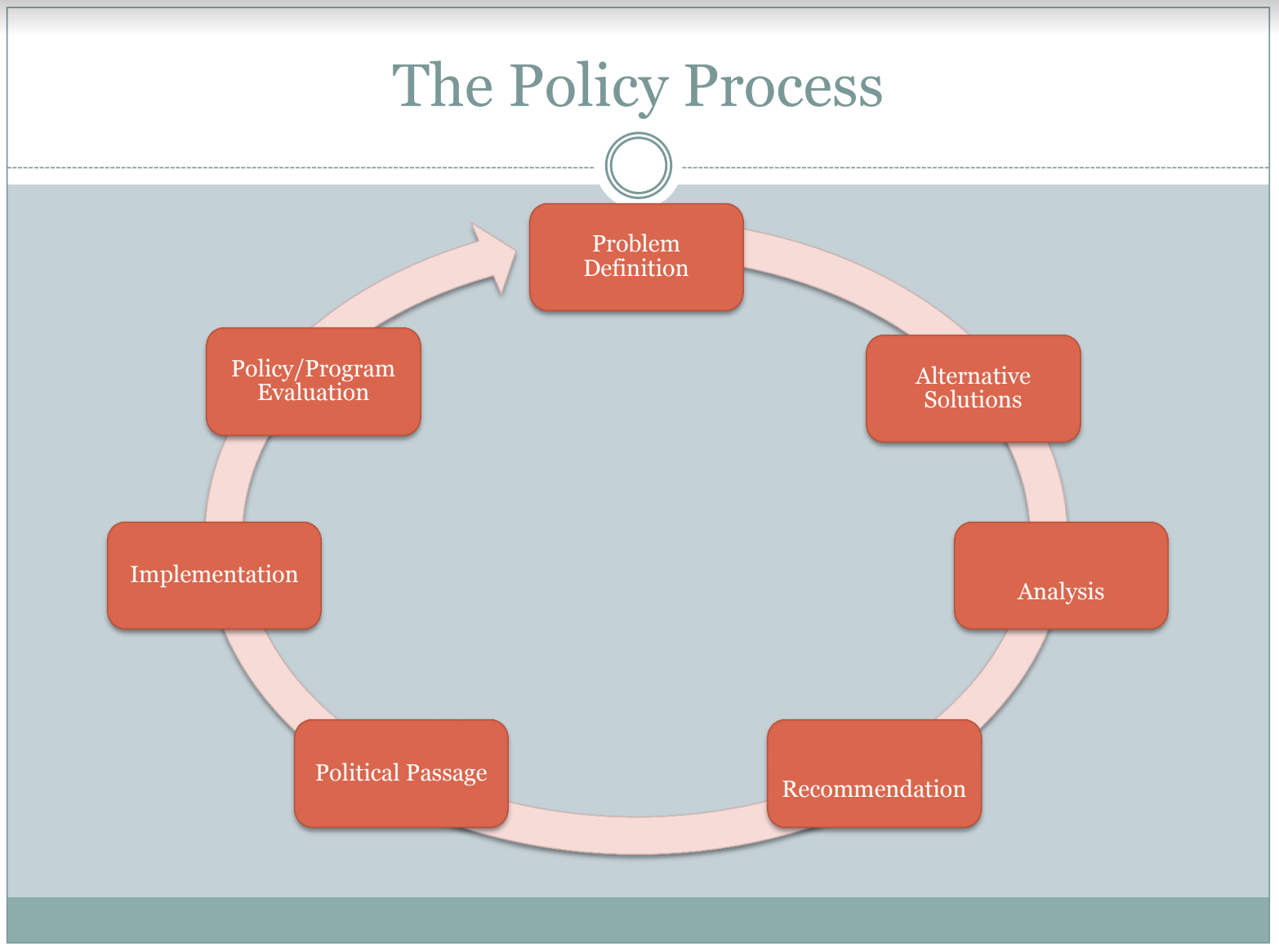Public policy is supposed to solve problems. This means that the first job of a policy analyst is to understand what problem a policy is trying to solve.
Problem definition can be overlooked at times but is a crucial part of the policy analysis process. This step not only helps an analyst understand what a policymaker is trying to do with a policy, but also helps the policymaker understand what she is trying to accomplish with it. Problem definition can also be the first step toward validating a policy or even opening the discussion for a policy alternative the policymaker wasn’t anticipating at first.
The first step in the policymaking process in Eugene Bardach’s A Practical Guide for Policy Analysis: The Eightfold Path to More Effective Problem Solving is problem definition. Bardach underscores some key elements of the problem definition process and offers guidance for policy analysts trying to improve their problem definition work.
First, Bardach suggests analysts think of deficit and excess when defining a problem. Specifically, he suggests using the word “too.” We do this all the time at Scioto Analysis: “there is too little social welfare as defined by the Genuine Progress Indicator,” or “there is too much poverty in the state of Ohio.” By defining a problem as a deficit or excess, you both make it clear what policy is trying to improve and you lay the groundwork for rigorous analysis of the problem.
Past deficit and excess, Bardach also suggests making the definition evaluative, or defining what makes a problem rise to the level of public concern. A classic way to deal with this is by defining a market failure, but this can also be done by identifying a classic social ill or appealing to the authority of the public body you are doing the evaluation for, usually laid out in law.
One special type of problem definition Bardach highlights is that “uncertainty” is the problem that evaluation addresses. Bardach says this is of particular interest when evaluating a program that already exists because the data is already there—what the analyst must do is reduce the amount of uncertainty—or certainty!—that a program is “working.”
Building on the idea of deficit and excess, problem definition can lay the groundwork for rigorous analysis if the analyst can quantify the problem. While some analysis can be done qualitatively, quantification can provide guidance to policymakers trying to set budgets or evaluate alternatives with significant economic components, which there are no shortage of in the policy world.
Part of the problem definition process is helping a policymaker take a step back and look at root problems a policy is trying to solve. In this case, diagnosing a condition that causes a problem can be a helpful tool. For instance, a policymaker might be considering capping interest rates at payday lending establishments because “too many people are going into debt due to payday lending interest rates.” If the real problem, though, is that “too many people are going into debt,” alternative policy options such as making EITC payments monthly or providing check cashing services at post offices start to arise that may be more effective at solving the root problem.
When it comes to problem definition, sometimes the problem itself is the risk or odds of an outcome occurring. When it comes to policy around nuclear meltdown, there are certainly not too many nuclear meltdowns in the state of Ohio, but the risk of one may be too high. Low-cost interventions to reduce that risk might be worthwhile even with lack of a live problem.
Similarly, sometimes a policymaker asks an analyst to work on hypothetical problems, like current procedures not being efficient. Inefficiency only exists if a better alternative exists that is more efficient. Thus, sometimes a problem needs to be stated as a hypothetical until the analysis is completed.
While policy analysis is built for providing information to a policymaker, it should not stop at the imagination of the policymaker. Sometimes the analyst should be in the business of identifying latent opportunities. This means seeing what the policymaker is trying to do and bringing a new perspective on the problem to light. If this speaks to the policymaker, it could lead to innovative new policy. I expect this is what happened with the American Recovery Act’s inclusion of groundbreaking child poverty provisions. Maybe Joe Biden didn’t go into this policymaking process thinking about child poverty, but someone convinced him it was a problem that was intertwined with the larger economic problem presented by COVID-19, and it became a centerpiece of the bill.
Also important is to avoid common pitfalls in problem definition. Don’t write the solution into your problem definition: keep it focused on the real problems people are experiencing. Don’t accept causal claims advocates are making about the problem too quickly. Don’t ignore the context of the problem. The problem definition should be narrow enough to say what the problem is and how we can find out the answer without saying what the answer is: it is a framework, not a conclusion.
Last, understand the problem definition process is iterative. Policy analysis works best with consistent communication between the analyst and the policymaker. During this communication, the question can change. Don’t be so married to a problem a policymaker asked you about two years ago that you don’t pay attention to the one she is asking you about today. She likely has a vote about it coming up and needs your guidance now.
There is a reason A Practical Guide for Policy Analysis is taught in public policy schools across the country: Bardach’s guidance is relevant to policy analysis and problem solving in general. And in order to solve a problem, you need to understand what that problem really is. Problem definition provides a framework for doing just that.


